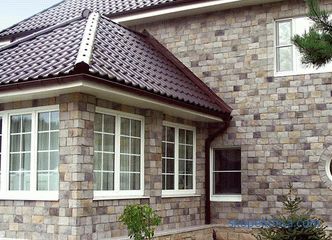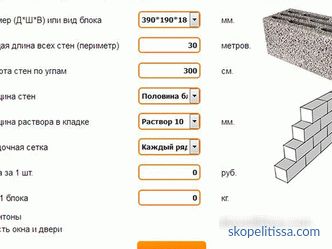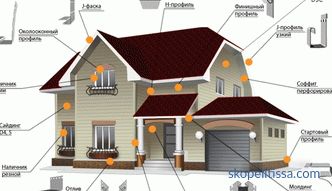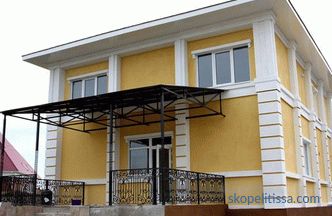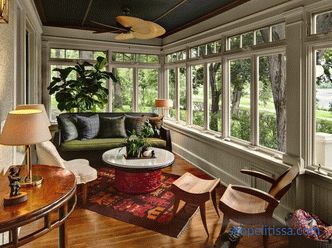Houses from a bar, thanks to the environmental friendliness, are popular option of private construction. But although they are fairly quickly heated and have good thermal insulation properties, warming a log house is an urgent need for most households.
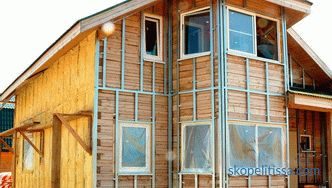
Differences between old and new technologies
Wood construction in Russia - centuries-old tradition. For centuries, houses were built exclusively from logs, from massive round and semicircular logs, the thickness of which was sufficient for good thermal insulation. As today, the tree shrank over time, and gaps appeared between the logs. But before there were other ideas about the beauty of the facade, so the usual tree moss was used to caulk the gaps. It landed in the gaps between the logs and, over time, reliably filled the entire space between them.
In modern construction, the issues of economy come to the fore and force you to use timber, the thickness of which does not always meet the requirements of the developed standards. With insufficient cross-section, in winter there is a full freezing, which means that the walls of the house are not able to retain heat. In addition, over time, the tree begins to crack, because of which the heat loss grows even more.
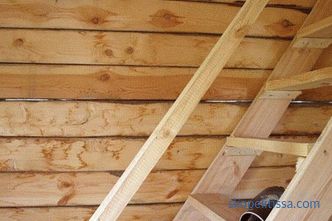
Advantages and disadvantages of wall insulation in a timber house
Thoughtful Owners are looking for ways to properly insulate a house from a bar in the winter to spend less on heating. This can be done in two main ways: from the inside and from the outside, with external insulation for several reasons preferable.
Features of insulation from the inside
With internal insulation, the positive effect of heat saving is leveled by the disadvantages:
- A part of the living space is inevitably lost due to the installation of a frame for insulation.
- The heat insulation layer hides “living” wooden walls and the rooms lose their unique charm.
- Due to the external winter cooling of an unprotected wooden wall, the dew point shifts to internal insulation. Condensation occurs, mold appears, and it is difficult to control the condition of the wood.
What happens to a wall when improperly insulated from the inside - in the video:
Insulating walls outside: advantages and disadvantages of the
methodMost often, it is resorted to, bearing in mind the obvious advantages as compared to internal insulation:
- The useful area of the internal space is preserved;
- External works do not change the family's daily routine.
- The facade of the house is reliably protected from sudden changes in temperature, which prolongs the life of the building.
- Proper selection of materials does not violate the room microclimate (the house "breathes").
- You can arrange the facade to your liking or improve the appearance, if the wood is darkened from time to time.
- If technology is followed, wood will be additionally protected from damage.
- Ease of monitoring the work of the construction crew.
The main disadvantage of outdoor insulation is that it is necessary to carry it out in good weather - there is no point in doing so when it is cold and damp.
Three basic methods of insulation
Any insulation of walls involves fixing a layer of insulation on it and the structures holding it. Several techniques have been developed for this, and each of them has its own advantages and peculiarities of execution.
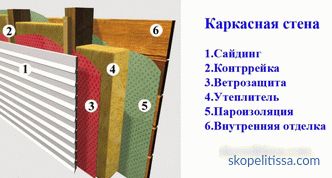
A hinged ventilated facade
This in itself The technology was developed as a decoration for the facade of a house, but since the installation procedure involves fixing a layer of mineral wool or similar material on the wall, this method can be considered as insulation.
Advantages of using ventilated facades:
- Long service life (up to 50 years), excellent heat and sound insulation.
- Easy installation.
- A wide choice of cladding material in various colors.
- The dew point shifts outward.
Mounting technology:
- Pre-treatment of lumber is carried out with compounds that prevent decay and make the tree unattractive for insects.
- Outside, a crate is fastened onto the house, onto which a sheet of water and wind protection is applied. In the space between the battens of the batten, air freely circulates, due to which condensate or moisture that appears by other means will be removed from the insulation.
- The crate is leveled with a plumb line.
- Next, slats are packed on the batten, the distance between which should correspond to the width of the insulator. Accordingly, the height of the rails is also selected - for central Russia it is recommended to use a heater with a minimum thickness of 70 mm.
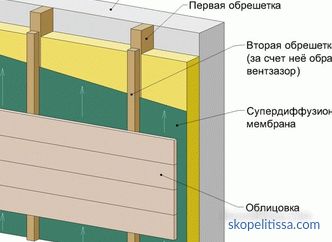
- Insulation mats are placed between the slats, fixing dowels
- Then, bars of not less than 5 cm thick are additionally packed on the slats so that there is always a gap between the insulation and the lining.
- Mounted cladding (siding).
Laying insulation for siding.
There are practically no fundamental differences from the previous technology - a heater is also used here and a decorative coating is also used outside. But if the name of the ventilated facade itself says about the place of its use, then the siding in any case closes the whole house.
Installation nuances taking into account the selected material:
- The distance between the slats is set equal to the width of the mat, if you choose foam or extruded polystyrene sheet.
- The distance between the slats is set 10-15 mm less than the width of the mat, if mineral wool is used. This should be taken into account when calculating the amount of mineral wool.
- According to the technology, slabs of cotton wool are mounted; Polymer plates are placed in the cells, the joints are processed with mounting foam.
- When using mineral wool, a waterproofing layer (diffuse membrane) is additionally mounted on top. It is not needed when using fiberglass or polystyrene.
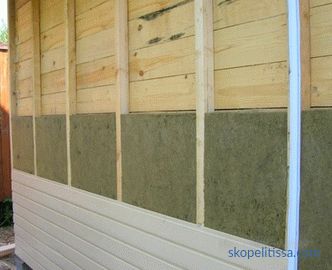
Polyurethane foam spraying method
The principle of this technology is clear to anyone saw how to work with mounting foam. The difference here is that the volumes of material needed to create a heat-insulating cushion are much larger, therefore, a spray gun using compressed air from a compressor is used for processing polyurethane foam. The advantages of the technology:
- Simple use and high speed of applying the heat-insulating mixture on large surfaces.
- Excellent adhesion (adhesion) with most building materials, long-term preservation of properties.
- Environmental friendliness, fire resistance and protection against rotting of the treated surface.
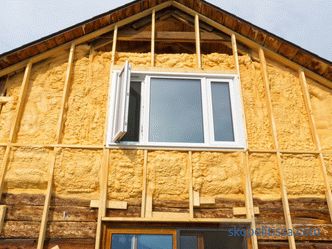
Types of insulation
Selection of insulation for external The works are wide enough and each of them has distinctive features that must be considered when choosing:
Mineral wool
Available in three varieties - stone (basalt), glass and slag. All have similar properties: fire-resistant, non-flammable, have chemical and biological resistance. Another advantage of the material is vapor permeability, environmental friendliness and high sound insulation.
By cons - cotton attracts rodents and when wet it does not dry out completely.
It all depends on the skills of the builders, but it is usually easier to warm the house from the outside with mineral wool using mats than rolls - the latter are not always convenient to unfold on vertical walls.
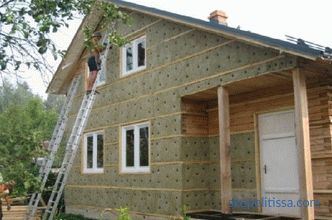
Styrene slabs (polystyrene, polyurethane foam)
Polyfoam - the cheapest option , light and porous, with low hygroscopicity and excellent thermal insulation. The main disadvantages are flammability (releases toxins during combustion), fragility and instability when exposed to ultraviolet radiation.
Extruded polystyrene
It has a special porous structure, tolerates low temperatures well and is unsuitable for microorganisms. The material is durable, convenient for installation (plate), does not absorb water. Disadvantages: it is flammable and releases harmful toxins.
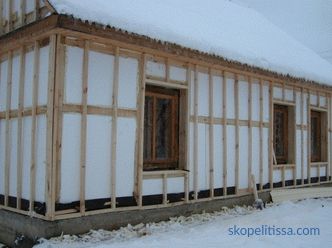
Ecological sprayed styrenes (ecowool and polyurethane foam)
Such road heaters from - for the method of application; for the treatment of large surfaces requires special installation and experience in the work. For small areas of complex shape (slots near pipes, windows, between the plates) polyurethane insulation in cylinders is offered.
"Warm" plaster
A mixture of light granules of complex composition (glass, cement and hydrophobic additives) that does not ignite, is not afraid of ultraviolet, well protects the facade from moisture and is easily repaired.
Preparation of a wooden structure for plastering on video:
Subtleties of wall insulation from a bar
Warming of a timber house outside the siding, you can not start when you want - before that it is necessary that the following conditions be met:
- The work on installing insulation can be started only after a complete shrinkage of the log house - often this period can be a year or two.
- It is forbidden to work if the facade has not been treated with an antiseptic. Ignoring this rule will lead to the appearance of fungus and rot.
- Before insulating a house from a bar outside, it is necessary to prepare the facade: to repair not only wide gaps, but also small cracks. To do this, you can use putty, foam or similar materials.
- Good thermal insulation of a log house requires careful selection of the material and calculation of its quantity. It should be considered how the heat-insulating material will be combined with the wood of the timber itself.
- To choose a suitable heater, you must consider the size of the building, the quality of the log house and the seams.
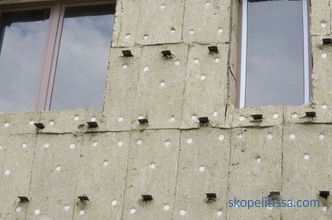
Tools and materials for building insulation
To insulate a house Without being distracted by the search for tools and materials, builders need to prepare the following:
- a bubble or laser building level, you can still use a plumb line;
- a tape measure, a square or a metal ruler;
- hammer, construction knife or hacksaw, screwdriver;
- front dowels, adhesive tape, chalk, foam, antiseptic;
- dry slats, insulation;
- steam and water iruyuschaya film
- material for the final lining.
- spray for wood treatment with protective compounds
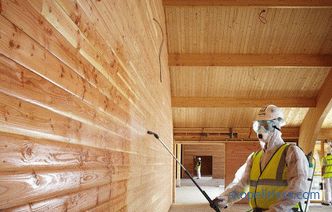
On On our website you can find a list of companies that provide house insulation services , among the low-rise country houses represented at the exhibition.
The overall course of the installation of thermal insulation
All steps to insulate a house from a bar using any of the methods described are always the same and are performed in the following sequence:
- for ventilation the first layer of insulation, mounted on the wall sheathing of wooden planks;
- the framework is fixed on the sheathing to fix the insulation material
- installation of insulation;
- installation of additional sheathing and framework (if double insulation);
- laying of an additional layer of heat insulator;
- mounting diffusion membranes That provide hydro and wind protection.
- installation of facade finish (wall paneling, siding) with an air gap.
Of course, as a result, the insulation will hide the beauty of the natural material, but the way out here can be a block house home decoration.
In general, the warming of a house from a bar performed according to the rules will make it possible to save on heating in the future. Despite the seeming simplicity of the whole process, there are quite a large number of pitfalls that will definitely come out during installation. As a result, if there is no proper qualification, then it is better to order the work to professionals, because it is much more pleasant to control the construction than to climb the walls yourself.
